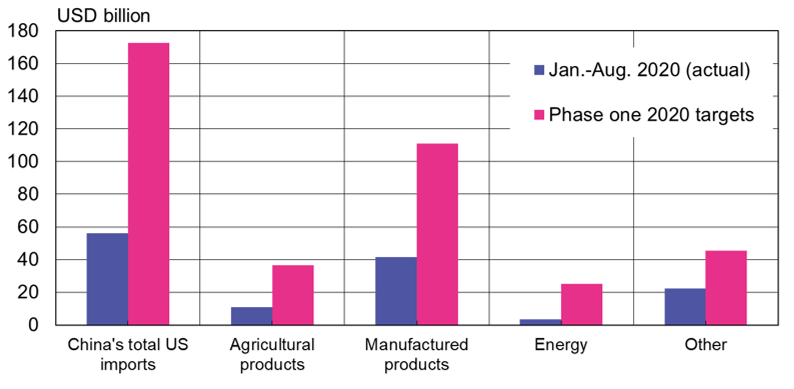BOFIT Weekly Review 40/2020
Latest round of US export restrictions even affects the electronics industry outside China
In 2019, the United States prohibited American microchip manufacturers from supplying components or technology to Huawei or any of its subsidies on the assertion that Huawei posed a threat to national security. The restrictions were extended in August 2020 to ban the transfers of all US software, operating systems and related technology that might be used by foreign electronics companies anywhere in the world that could end up with Huawei or its subsidiaries. For example, the South Korean Samsung and LG decided in September to end deliveries of displays to Huawei. Media reports at the end of September claimed that the US was adding names to its entity list, including Chinese microchip maker SMIC. The US Department of Commerce has yet to officially confirm the addition.
In practice, the bans mean that US technology cannot be sold to firms on the entity list without special permission. Companies can seek an exemption from the export ban, and some exemptions have already been granted. Exemptions are decided on a case-by-case basis, however, which has created uncertainty about the rules for getting an exemption. The Peterson Institute for International Economics (PIIE) estimates that the restrictions could substantially reduce global demand for US electronics components. Chinese firms not on the entity list and foreign companies they do business with could shift their supply chains away from the US to assure continuity.
As part of anti-Chinese technology bans, the US government is seeking to forbid use of the social media apps TikTok and WeChat in the US. TikTok, through complex ownership arrangements with the US-based software giant Oracle and retail behemoth Walmart, has sought to avoid the ban, but the outcome is still unsure. A California court issued an injunction in late September that delays the justice department’s imposition of a WeChat ban in the US. The commerce department’s order to remove the app from app stores also has yet to be implemented. China has responded with new restrictive measures by announcing that it will establish its own entity list of suspect firms to be excluded from the Chinese market. There has been no lack of speculation as to which firms might end up on the list, but no names have yet been released.
American electronics components this year have been the sole category in which trade between China and US has met the target established under the phase one bilateral trade agreement. Total Chinese imports from the US, however, still dramatically lag the targets agreed in February as part of the phase one trade deal. The value of US imports to China in 2020 as of end-August was just 56 billion dollars. China is committed under the trade agreement to boost its imports from the US by 64 billion dollars (based on 2017 trade flows) to 173 billion dollars this year. It is likely that imports this year will come nowhere near the target levels. The US-China phase one tracker maintained by PIIE shows that China has most severely missed its agreed targets in the energy sphere. As of end-August, China had only imported from the US energy products worth 3.5 billion dollars. This year’s goal is 25 billion dollars. Agricultural products at end-August had reached 11 billion dollars, when this year’s target is just under 37 billion dollars.
China’s US imports in January-August lagged far behind the targets set in the phase one trade agreement

Sources: PIIE and BOFIT.